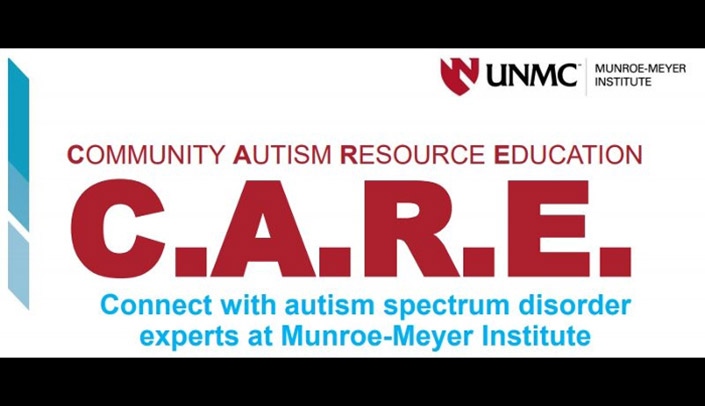The CARE Program has always been adaptable.
Created in 2018 by Amanda Zangrillo, Psy.D., and her team, the Community Autism Resource Education (CARE) Program uses presenters from a variety of areas and departments at the Munroe-Meyer Institute, as well as the community, to achieve its goal: providing support, information and access to community resources to parents and caregivers of young children on the autism spectrum.
“Over the years, we’ve changed the format quite a bit,” said psychology postdoctoral fellow and CARE coordinator Patricia Zemantic, Ph.D. “Typically, though, we were still doing a face-to-face program.”
In the face of COVID-19 social distancing restrictions, however, the typical CARE group meetings — which lasted four hours — were no longer possible. So Dr. Zemantic and the CARE team, working evening and weekends, adapted the program once again — quickly developing a CARE website to provide a virtual version of the program designed to provide continued support to families.
Videos and materials created with the help of MMI social media manager Nikki Hackendahl, who also designed the website, explore topics such as feeding, behavior, community resources and more.
“For now, we have the program set up so it’s entirely self-paced, and parents can choose the topics they’re most interested in learning about,” Dr. Zemantic said. “Doing a four-hour program online can be difficult, so we have it set up to be more self-paced.”
The site features handout materials and learning checks cover the key content. CARE providers supply feedback on participants’ responses right away, to ensure key material is understandable.
“It’s a way for us to check in to make sure our videos are conveying the things that we think are important, and people are able to process the information,” Dr. Zemantic said.
The group also is working with Olivia Hernandez-Gonzalez, Ph.D., a fellow in the MMI Department of Psychology, who is translating the materials for a Spanish language version of the site.
The program has lost the face-to-face component, Dr. Zemantic said, but CARE staff is discussing supplementing the web materials with Zoom sessions covering special topics.
“We’re hoping that as we get a pool of questions from caregivers, we can not only make video responses, as a sort of interactive FAQ, but we’ll find possible topics for Zoom sessions,” Dr. Zemantic said.
YouTube views show that the views are being accessed at about the same rate as people attended the live programs, Dr. Zemantic said. In fact, the whole experience has been so successful, the CARE team is considering ways to incorporate the website into its outreach efforts even when social distancing rules relax.
“One thing we’ve discovered is that people are choosing which videos, or parts of the videos, to watch — some areas of discussion are more interesting to families than others, probably depending on the needs of their child,” Dr. Zemantic said. “Having a model where people can self-select the topic they want to hear about has advantages. In addition, even when we resume having face-to-face services, this will be an asset for families who would rather do an online model or for whom travel is difficult.”
The CARE Program is supported by funding from Donald C. Scott, M.D.
